The Kitchen as a Landscape
A culinary manifesto from Tuscany: Four spontaneous recipes from a season of deliberate, gentle living.
There are places that shape you, like rivers do with stones—gently, but persistently. Tuscany is one of those places for me. I’ve been coming here since I was a child, and I never really stopped.
This place holds layers. The child I was. The mother I’ve become. The woman still learning to root herself—through food, through silence, through the shifting light on these stone walls.
For those of you who’ve followed The Freaky Table for some time, you might remember: this has never been just the place where my family’s holiday home is.
Alongside Venice, this is where I grew up—not just in years, but in essence. It’s here that I came to understand my quiet, inward nature. Where I learned to listen. Where I began to sense the subtle presence of the natural world, and to trust in the kind of spirituality that doesn’t speak loudly, but grows slowly, like moss, through silence, observation, and a deep connection with Nature.
A few years ago, we restored another part of the house—some of you might remember that too. I was five months pregnant, painting the walls barefoot, standing on the cool stone countertop Francesco had built by hand. It was the end of spring then, as it is now. The scent of wild fennel and damp earth drifted through open windows. It seeped into our clothes, our skin, and the kind of dreams we still called plans.
And now, something in us is settling. The house no longer feels like just a pause between places, a retreat from the world. It’s becoming a place we return to with intention—a place we might stay longer this year, and maybe the next.
We’ve enrolled Flora in the local kindergarten, a small and gentle place, and we dream of letting her grow up—at least for these early, easily uprooted years—a little here and a little in Venice, just as I did. Giving her both landscapes, both silences. The hills and the lagoon. The olive trees and the canals.
Even though the plan is still to move back and forth, there’s a quiet sturdiness in the idea—like the roots of a tree that finally decides where it wants to grow.
Like any place that truly shapes you, this one leaves its mark on everything, even the most everyday gestures. What grows here, what’s in season, what the land offers—all of it quietly steers how we live, how we move, and of course, even how we eat.
When we’re here, we cook as the land invites us—not to impress, but to nourish. To remember — to reconnect with the rhythms of this place and its seasons. Our meals always take shape without much planning, shaped more by what the surroundings offer, what friends bring, and what the air seems to call for. These past weeks, we’ve been cooking like this: simple, honest dishes rooted in Tuscan rhythms, with the wildness of late spring still clinging to them.
This unplanned, improvisational, and creative approach to cooking is, for me, a beautiful way not only to engage with food but also with life itself. It teaches resilience and the art of making do, while leaving room for a spontaneity that is often lost in the quest to keep everything under control.
There is something essential in this kind of cooking. You use your hands, you listen to the ingredients, you remember that food doesn’t have to be complicated to be meaningful.
I thought I’d share a small menu of what’s been gracing our table lately. A whisper of late spring, yes—but not tied to it. These are dishes that carry memory and intention, that welcome you into the kitchen like an old friend.
Each recipe is tied to a moment, a place, a walk, or a wild herb we found along the way…I just want to bring you into what feels natural to me when it comes to cooking—whether it’s connected to Venice with its ingredients and flavors, or to Tuscany.
So many times I’ve heard people say that having to think about what to eat every day (or worse, to cook) is a chore, a hassle, a problem. But when did taking care of what we eat become something secondary—or even a nuisance? There’s so much beauty in preparing something good for yourself or for others. There can be so much care and attention, so much presence and connection, so much life!
Near our house, at the edge of the village, stands the Casina dei Mandorli—a small, charming cottage nestled among almond trees. Its architecture, with delicate pointed arches, resembles a tiny Gothic chapel, although it was originally just a simple tool shed. This place holds a special history: it was the first house where my young parents spent time here in Tuscany, often coming to paint in the old abandoned barns or under the surrounding olive trees. My father, not much older than I am now, built the stone fireplace that still warms the room—a quiet witness to those early days.
Today, close friends live in the Casina, and we visit often—not just to see them, but to harvest fresh sage from a plant that has grown into a towering giant. (Check out my reel to see it!) We even brought a cutting from that sage back to our garden in Venice, but the different soil and climate have shaped it into something quite different—two plants sharing the same soul, yet distinct in their strength and flavor.
Anyway, this brings me to the first recipe I want to share with you: crispy fried sage.
I’ve already shared moments in my stories of us snacking on these crispy fried leaves, and honestly, I never thought another recipe was needed for such a classic. After all, it’s just fried sage. But I’ve received so many questions asking for the exact batter measurements, so here I am, ready to share.
BEER BATTERED FRIED SAGE LEAVES
Ingredients:
30–40 fresh sage leaves
70 g all-purpose flour (type 00)
100 ml light beer
50 ml ice-cold sparkling water
A pinch of salt
A pinch of sweet paprika
A pinch of black pepper
Sunflower oil (or neutral oil) for frying
Instructions:
Whisk together the flour, salt, pepper, and paprika. Gradually add the ice-cold sparkling water, then the beer, mixing until smooth.
Refrigerate the batter for 30 minutes.
Wash and dry the sage leaves thoroughly.
Heat oil in a wide pan over medium heat. Stir the batter, dip each leaf in it, and fry in batches until golden and crispy, about a few seconds per side.
Drain on paper towels, sprinkle with salt, and serve immediately.
The medieval castle of Montemassi rises gently above the village, its silhouette a familiar backdrop to every small errand or evening stroll. Often, our walks take place at dusk, accompanied by the soft tolling of the church bells that still mark the passing hours throughout the day. It’s a peaceful, quiet place—rarely crowded, always still—where the wind moves softly through the grass and time seems to pause. We often find ourselves walking its slopes, baskets in hand, drawn not just by the view but by what grows beneath our feet. The hills around the castle are full of wild herbs and edible plants, and on our latest walks, we’ve gathered tender nettle tops, soft borago leaves and flowers, and a few young wild fennel fronds. The abundance feels like a quiet gift from the land, and these simple foraged ingredients bring me to the second recipe I want to share with you.
(WILD) FENNEL AND PANE CARASAU GRATIN WITH SOUR CREAM
* Pane Carasau is a traditional Sardinian flatbread—thin, crisp, and slightly toasted. It’s well-known throughout Italy and incredibly versatile for many recipes. If you can’t find it, you can substitute it with other crisp, thin flatbreads.
This gratin is made with sour cream, but you can also use a light béchamel sauce—dairy or plant-based milk both work well to keep it lighter.
The key ingredient is wild fennel, which gives the dish its distinctive aroma—but if you can’t find it, you can simply use fennel fronds instead.
Ingredients (Serves 4):
2 fennel bulbs with fronds
A couple of sprigs of wild fennel (finocchietto selvatico), finely chopped
2 shallots
1 teaspoon fennel seeds
100 g Pane Carasau bread
1 knob of butter, plus extra for greasing
4 tablespoons grated pecorino cheese
100 g sour cream (with a splash of milk if needed, to make it fluid)
Salt and black pepper, to taste
Instructions:
Finely slice the shallots along with the wild fennel fronds and the fennel fronds from the bulbs. Gently sauté them in a pan with a bit of butter.
Add the thinly sliced fennel bulbs to the pan. Cover and cook over low heat until the fennel is tender and well softened. Season with salt and pepper.
Meanwhile, bring 300 ml of water to a boil and steep the fennel seeds in it. Let the infusion cool to lukewarm.
Preheat the oven and lightly butter small baking dishes (I used four dishes about 12 cm in diameter).
Assemble the bake like small lasagnas: start by placing a spoonful of cooked fennel at the base of each dish. Then cover with a sheet of Pane Carasau briefly soaked in the fennel infusion.
Add a layer of sour cream (or béchamel if you prefer), then sprinkle with grated pecorino cheese.
Repeat these layers until you’ve used all the ingredients, finishing with a generous sprinkle of pecorino on top.
Bake for 20 minutes, finishing the last 5 minutes under the grill to achieve a crispy, golden crust.
I first discovered wild asparagus on a quiet afternoon years ago, not in a market stall or cookbook, but watching Ferdinando—the local boar hunter—trudging back into town. He was dressed, as always, in full camouflage gear, like someone about to disappear into the folds of the Mediterranean scrub. No cinghiale that day, but the look in his eyes said he wasn’t coming home empty-handed. In one hand: a massive bunch of wild asparagus, dark green and slightly tangled, like the forest itself had handed him a consolation prize. And frankly, a much tastier one.
These slender, intensely flavored spears grow in the narrowest of windows, tucked under olive trees and scattered among the underbrush like quiet treasures. I’ve gone looking for them many times since—sometimes wandering so deep among the centuries-old trees that the hills around me became a soft blur of silver leaves, sun-dappled shadows, and silent time.
It was after one of those chats with Ferdinando—half about asparagus, half about how the boars were getting smarter every year—that I had the idea to pair those wild, earthy spears with something equally bold: Tuscan sausage. The kind you can only really find here. Specifically, the ones from Maremma—lean, salty, intensely peppery, and unapologetically seasoned.
Now, I should say: we’re not exactly a meat-eating family. We come from the lagoon, where fish is king and sausage… not so much. But something stirs in us when we’re in Tuscany. Maybe it’s the smell of the woodsmoke, or the way everything here feels rooted and feral. Every now and then, we give in. We buy the sausages—sometimes even wild boar ones—from local producers, and let me tell you: they taste like no other. Which brings us here, to this dish. A bowlful of early summer: wild asparagus gathered under ancient olive trees, and sausage that speaks of Tuscan hills and hunters who never come home empty-handed.
HOMEMADE PICI WITH WILD ASPARAGUS AND TUSCAN SAUSAGE
Pici—a type of handmade pasta resembling thick, rustic spaghetti—are one of the most iconic dishes of Tuscan cuisine, especially beloved in the areas of Siena and the Val d'Orcia.
They're surprisingly easy to make at home, and I’ve dedicated an entire post to the process, complete with detailed instructions and the full recipe [link here].
If you’re short on time, though, you can also use regular spaghetti—just go for a thick, hearty kind that holds the sauce well.
Ingredients (Serves 4):
500 g fresh pici
1 bunch wild asparagus (at least 400 g)
4 Tuscan pork sausages (these are usually well-seasoned and peppery)
½ cup dry white wine
1 garlic clove
2 tablespoons extra virgin olive oil
Salt and freshly ground black pepper, to taste
Shaved Parmigiano Reggiano, to finish
Instructions
Bring a large pot of salted water to a boil. You'll use this to cook the pasta later.
Prepare the asparagus: trim off the tough ends and rinse well under cold water. Break the spears into small pieces with your hands or a knife, keeping the tips whole.
Cook the asparagus in a nonstick pan, heat 1 tablespoon of olive oil and gently fry the halved garlic clove until it starts to sizzle. Remove the garlic, then add the asparagus and sauté over medium heat for a minute or two. Add a ladleful of hot pasta water and continue cooking for 5–6 minutes, until tender but still bright. Season with salt and pepper to taste, then set aside.
Use a knife to make a lengthwise slit in each sausage and remove the casing. Break the sausage meat into coarse crumbles with your fingers.
Heat the remaining tablespoon of olive oil in a separate pan. Once hot, add the sausage and cook over high heat for 3–4 minutes. Deglaze with the white wine and let it evaporate completely. Continue cooking until the sausage is nicely browned. Taste and adjust seasoning if needed—but keep in mind, Tuscan sausages are already quite spicy and flavorful.
If you prefer, you can drain off any excess fat from the sausage pan. Then mix the cooked sausage with the asparagus mixture.
Once the water is boiling, cook the pici until al dente, following the cooking time indicated. Drain and toss the pasta directly into the pan with the sauce. Mix well to coat.
Transfer everything to a large serving platter and top with generous shavings of Parmigiano Reggiano. Serve immediately.
Years ago, someone told us—almost in passing—that if you ventured into the countryside, down an unmarked road near the next village, you’d find vegetables sold out of a basement. Nothing more specific. Just: “Ask for Lucia.”
And so we went. And we’ve kept going back ever since.
Lucia’s place is one of those secret sanctuaries that only exist by word of mouth and deep local roots. It isn’t a shop. It isn’t even really a market. It’s a family farm in the truest, oldest sense. Chickens and guinea fowls strut through the courtyard, dogs (all looking exactly the same to us) doze in sun patches or trot past like they have urgent business. But Lucia knows them all by name. She produces everything: vegetables still warm from the sun, eggs laid who-knows-where by hens with minds of their own, fragrant honey, peppery olive oil—the kind of things that only come from land that’s been loved for generations.
You serve yourself without ceremony. Pile your crooked zucchini and tender lettuces into brown paper bags. Lucia weighs them on an ancient iron scale that might’ve survived a war, then scribbles your total on a torn piece of checkered notebook paper with a thick black marker. It feels like stepping into another century—except the flavor of the vegetables makes you think you’ve never truly tasted one before in your life.
The eggs, though… those are gold. In high demand and short supply. “First come, first served,” Lucia shrugs, with a knowing smile.
For days, Flora and I drove there in our rattling Panda, bumping along the gravel road with that same question on our lips: “Any eggs today?” Each time, we came home instead with absurdly good strawberries—tiny, fragrant, sun-sweet jewels that stained our fingers. But no eggs. Always, someone had beaten us to them.
Until the day before we were due to return to Venice. That morning, we pulled up and there they were: the eggs. Still warm. We bought as many as we were allowed. And since the fridge was full of bits and bobs from the week’s haul—half a head of Roman lettuce, the last peas and favas, some stubborn little artichokes—we made this. A green shakshuka, of sorts.
The kind of meal born not out of planning, but of place. Of seasons. Of what you have, and what you don’t. Of what the land gives you—when you’re lucky enough to arrive in time.
A GREEN SHAKSHUKA WITH FARM EGGS
This is one of those recipes that comes together quickly. Call it a green shakshuka, or simply eggs nestled in a tangle of seasonal vegetables. What matters most is what goes in: tender artichokes, sweet peas, fava beans, fresh lettuce hearts, and the gentlest red onions.
You can swap in other spring greens depending on what’s available: chard, spinach, or even wild herbs would work beautifully. A soft braise brings it all together, and the eggs cook right on top—no fuss, no need for perfection. Just a good piece of toasted bread to scoop it all up.
Ingredients (Serves 4 people):
1 egg per person (farm-fresh if possible)
3 carciofi moretti (small violet artichokes)
250 g fresh peas, shelled
250 g fresh fava beans, shelled
1 Tropea red onion
The heart of a romaine lettuce
½ cup dry white wine
¾ cup hot water
2 tbsp extra virgin olive oil
Salt and freshly ground black pepper
Toasted bread, for serving
Instructions
Clean the artichokes by removing the tough outer leaves and trimming the tips. Slice thinly and place in a bowl of water with a splash of lemon juice to prevent browning.
Peel and wash the onion. Shell the peas and fava beans. Wash all vegetables thoroughly, including the romaine heart.Slice the onion thinly and gently sauté in a wide pan with olive oil until soft and fragrant. Add the peas and fava beans. Drain and thinly slice the artichokes, then add them to the pan as well.
Pour in the white wine and let it evaporate. Add the hot water, cover, and cook over medium heat for 10–15 minutes, until the vegetables are tender.
Thinly slice the romaine heart and stir it into the pan. Cook uncovered for another 5–6 minutes. Season everything with salt and freshly ground black pepper.
Use a spoon to create small wells in the vegetable mixture. Crack the eggs directly into the pan, one per well. Lightly salt and pepper the eggs. Cook uncovered (or with the lid on, if you prefer firmer yolks) until the whites are set and the yolks still soft, or to your desired doneness.
Bring the pan to the table and serve straight from it, with toasted bread on the side to scoop up every last bit.





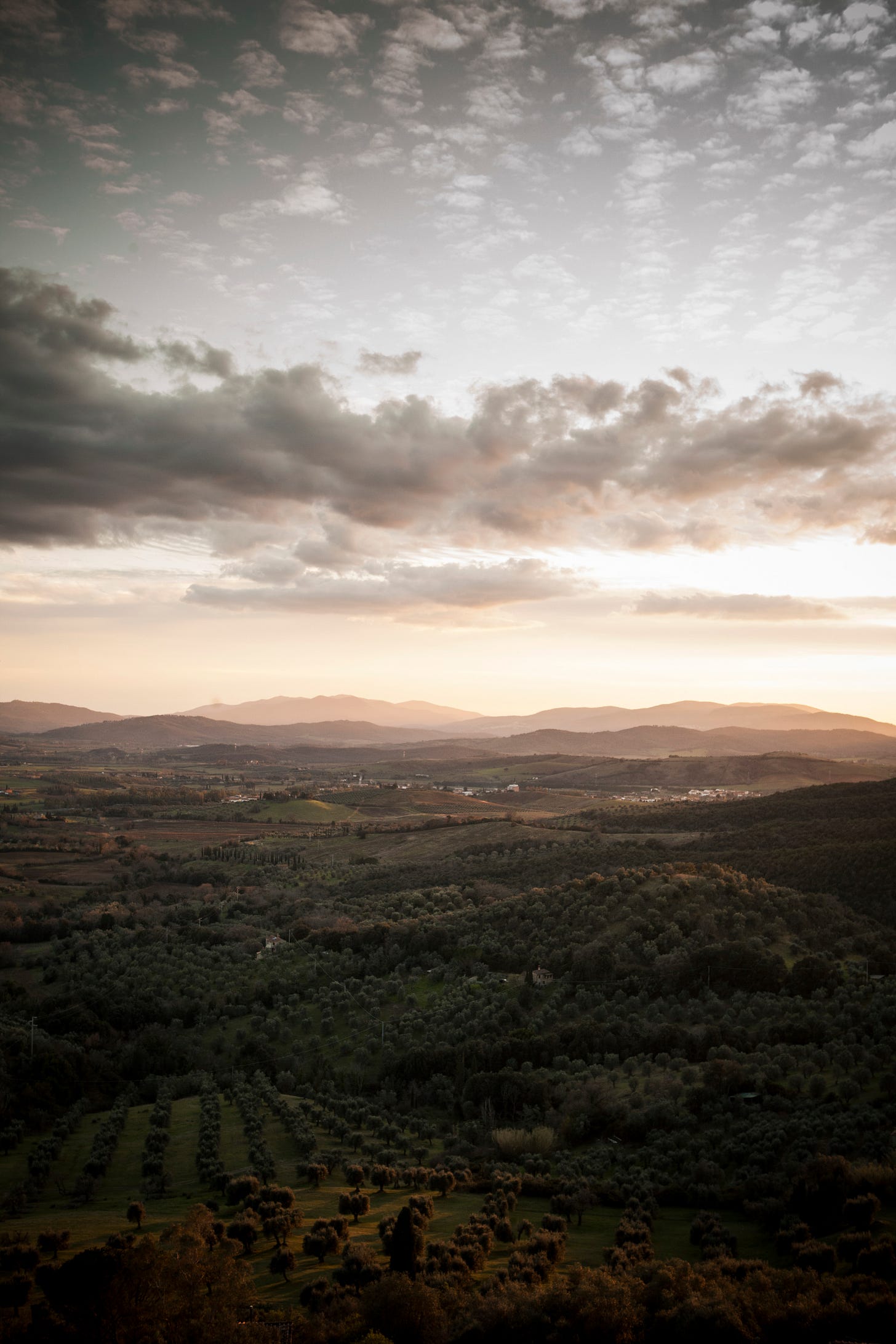
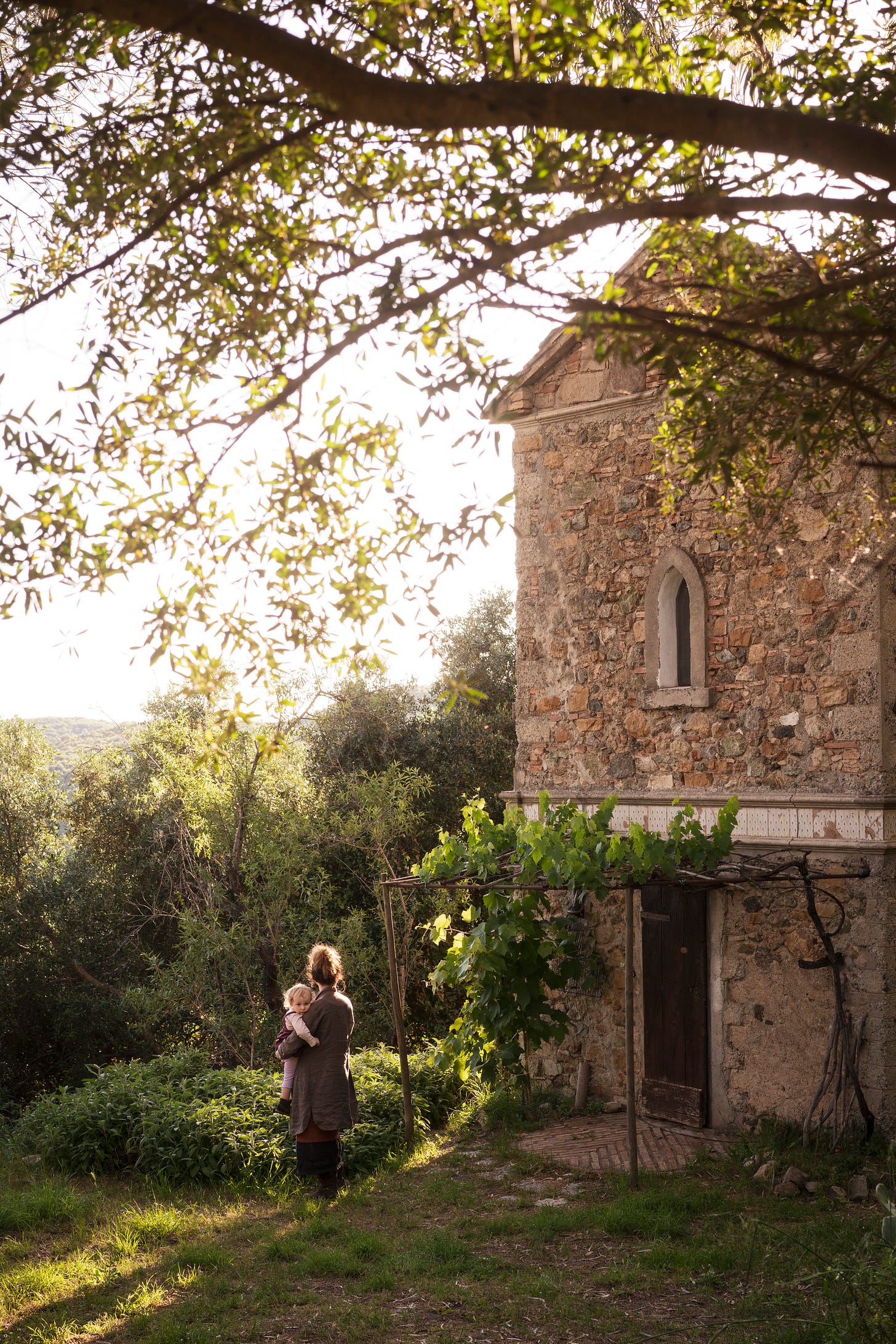
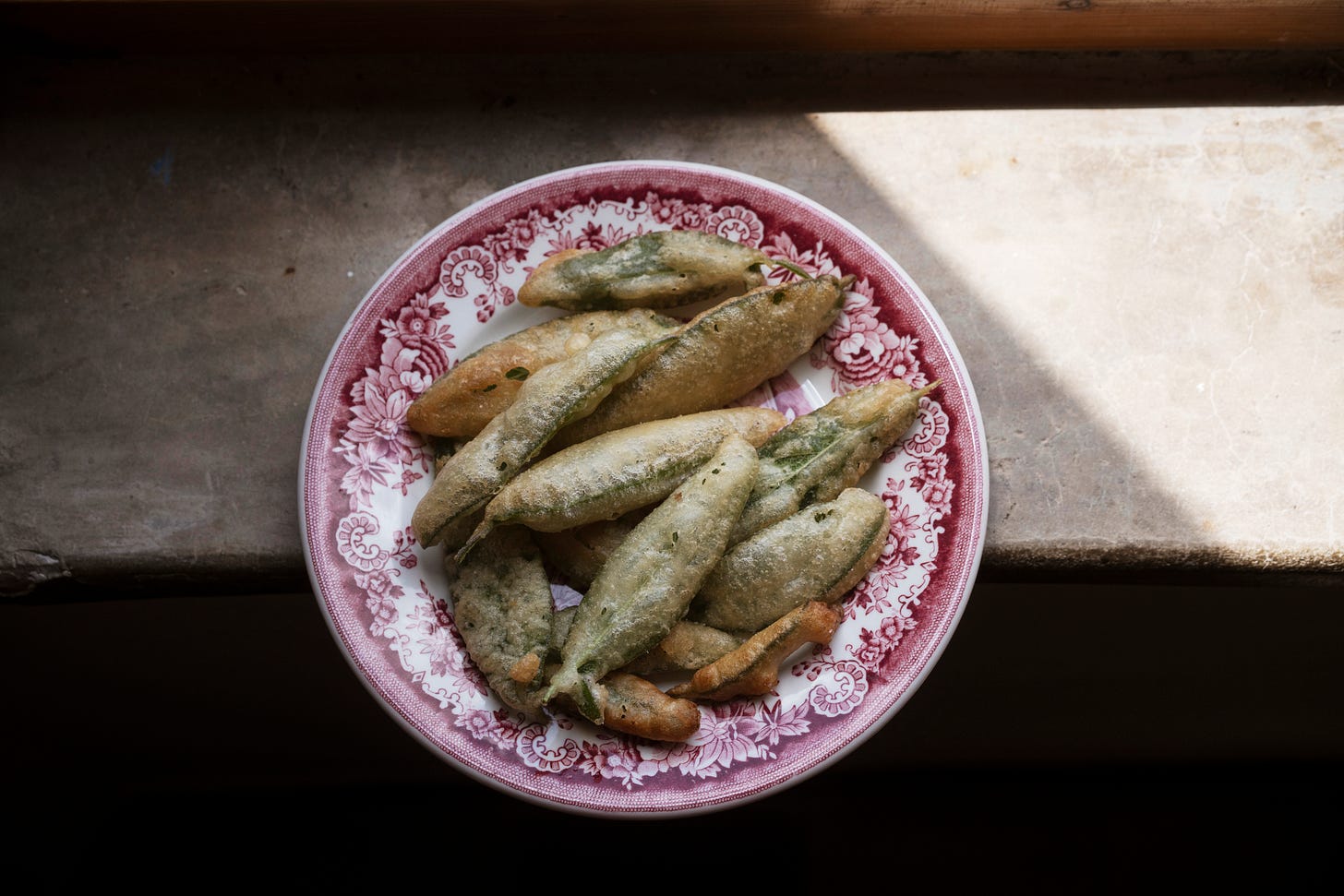


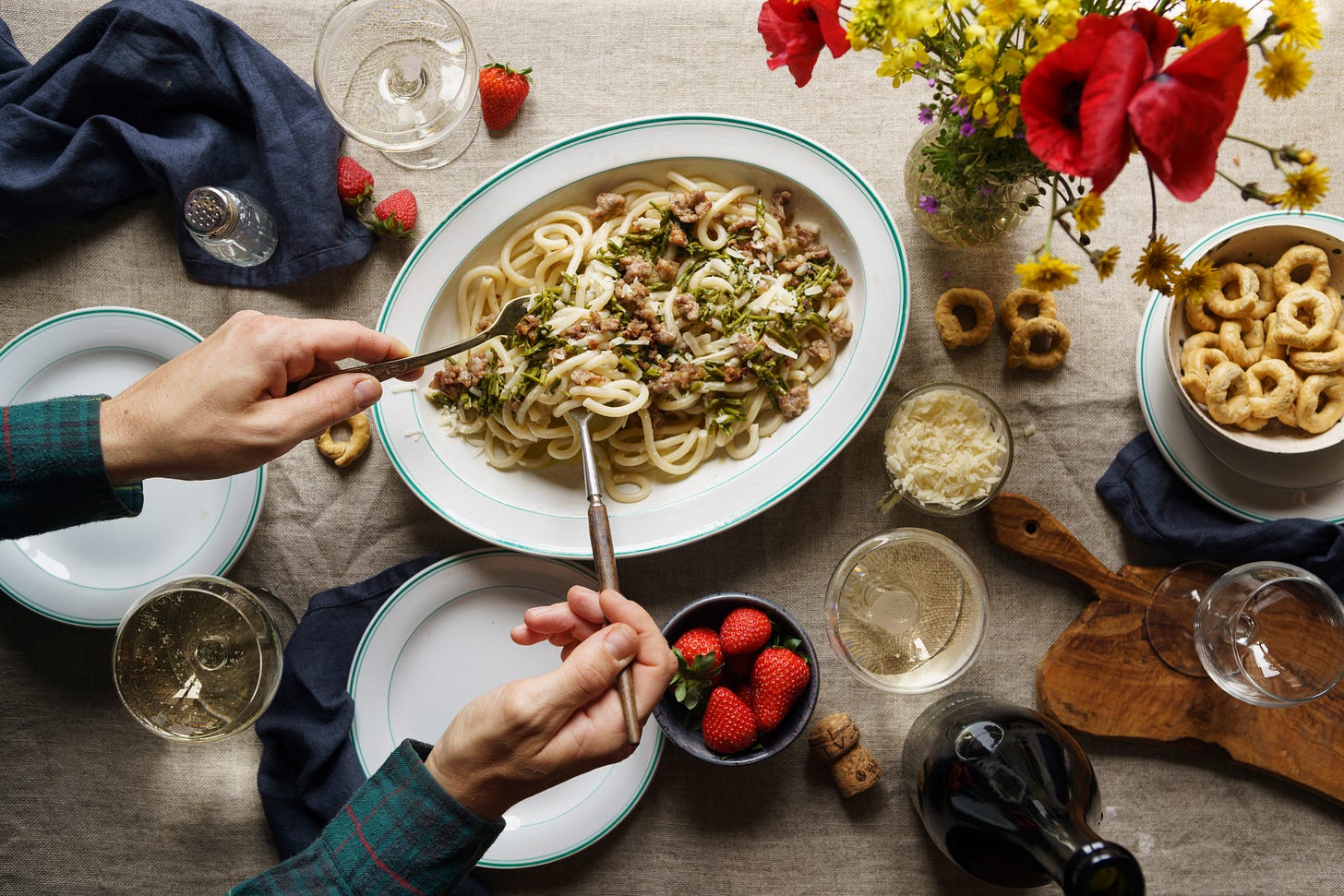


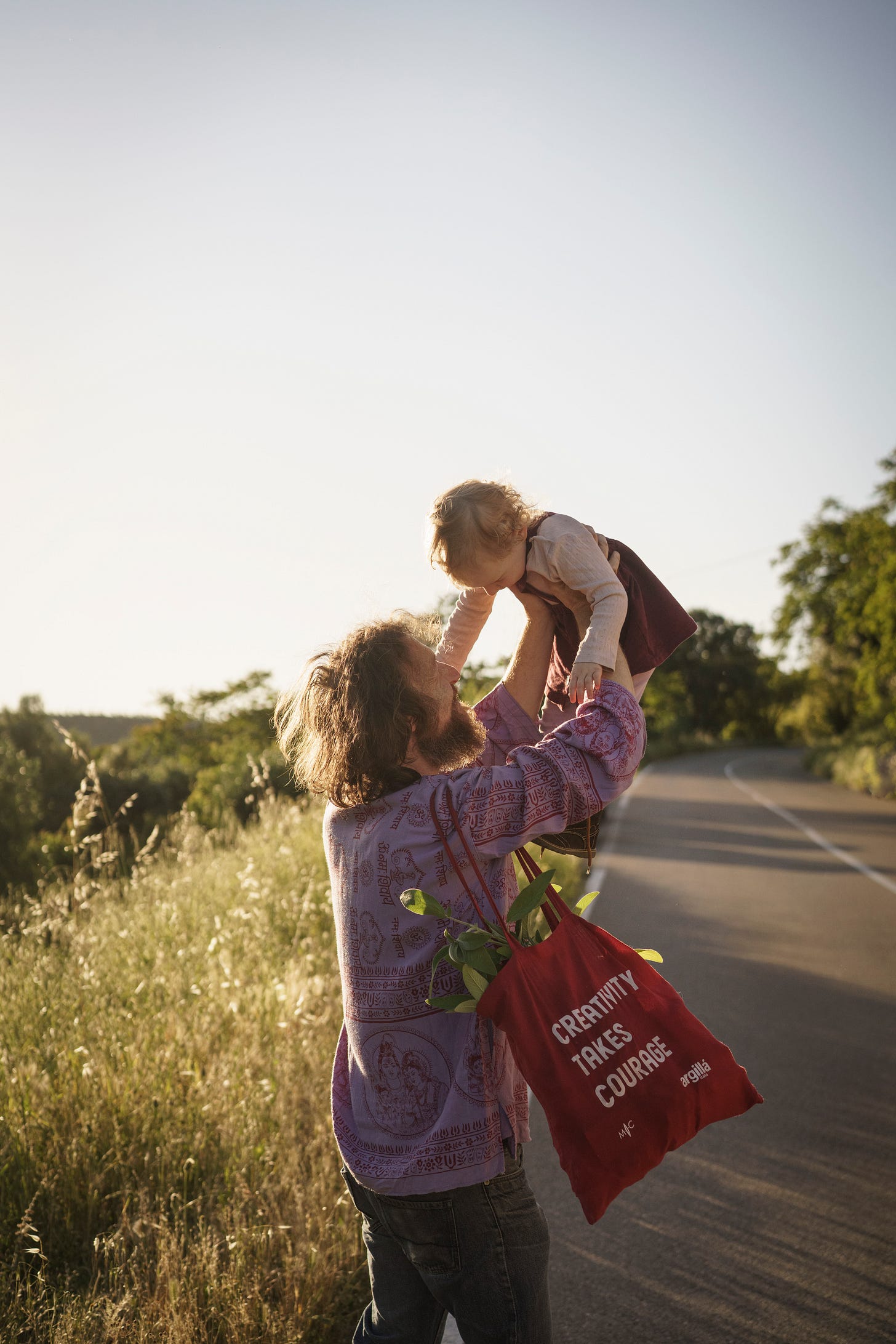
I am speechless
Wonderful piece of writing. Love the recipes.